Ijraset Journal For Research in Applied Science and Engineering Technology
- Home / Ijraset
- On This Page
- Abstract
- Introduction
- Conclusion
- References
- Copyright
A Study on Solid Waste Management and Waste Water Treatment by Leachates Recirculation and Moving Bed Bio Film Reactor [MBBR] Technique in Ambala
Authors: Angad Preet, Aadil Manzoor
DOI Link: https://doi.org/10.22214/ijraset.2025.66352
Certificate: View Certificate
Abstract
Ambala is crowded district with Approx Sixty Five lakhs and Thirty Five thousand Twenty Seven population including Ambala City, Ambala Sadar, Barara And Naraingarh, During rainy seasons waste from domestic Houses create blockage of sewerage system and effect the solid waste management system. According to district environment plan prepared by ULB In 2023 Ambala City has a Population of 351650 and generates about 158 Solid Waste Generated per day (TPD) On the other hand Ambala Cantt has 31 wards with population of 236850 and 110 Solid Waste Generated per day(TPD) leachate generation is very high in the city due to this people faces problem of heath and Hygiene. In this paper , various methods like MBBR Technique and Leachate Recirculation techniques is discussed to overcome this issue and to increase the efficiency of landfill and solid waste decomposition.
Introduction
I. INTRODUCTION
LEACHATE , is simply a waste water that is produced from solid waste in the form of liquid during leachate recirculation . leachate is also known as waste water in local language, treatment of leachates is very complicated process as it require lots of treatments and manpower . There are various techniques to treat leachates including leachates recirculation , MBBR , Reverse Osmosis , Nanofiltration etc. Treatment processes may include biological processes ( ie. Activated sludge, aeration, nitrification ,chemical processes (ie. oxidation, and physical processes (ie. air stripping , ultra filtration [1]. In this paper we discussed the two techniques 1. Leachate Recirculation and 2. MBBR technique.
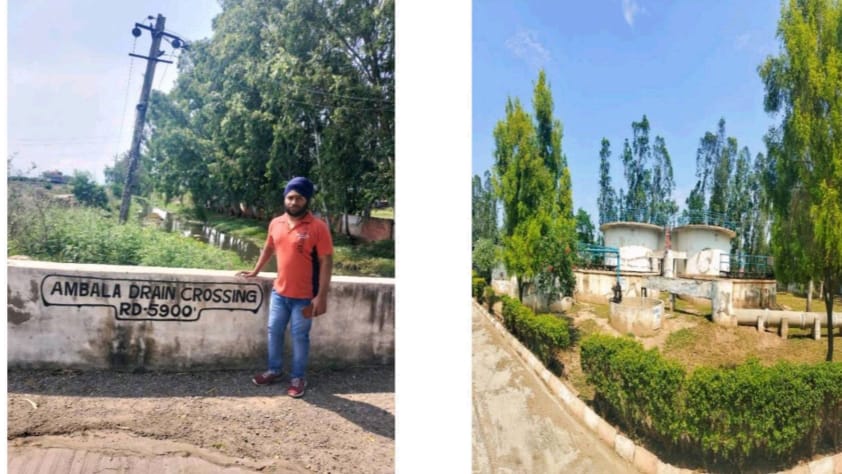
Figure 1 : 3MLD STP AMBALA CITY PHED DIVISION DEVINAGAR AMBALA CITY
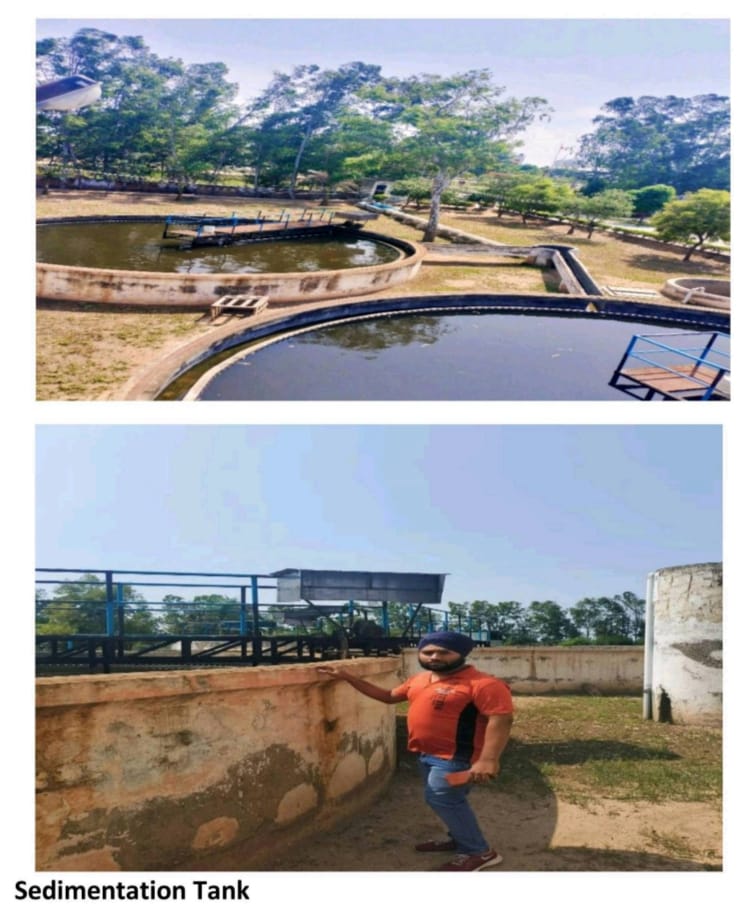
Figure 2: Sedimentation Tank
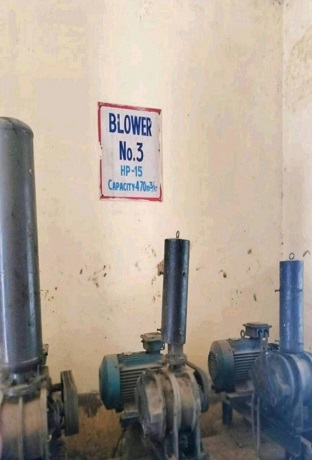
Figure 3: Blower
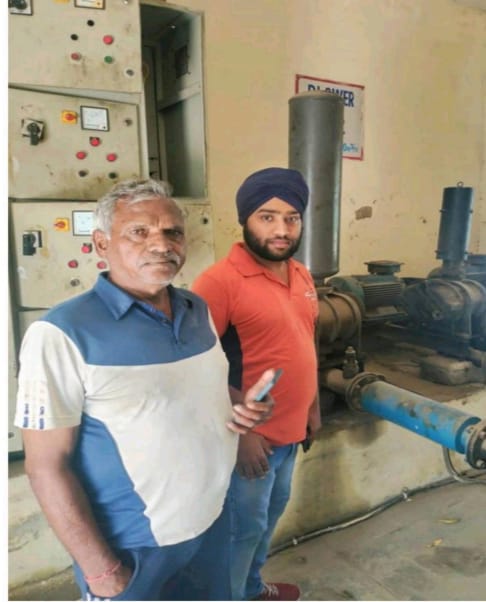
Figure 4: Aeration Unit At PHED DEVINAGAR AMBALA CITY
Leachate recirculation is simply recirculation of waste water or leachates through the landfill This has following benefits:
(i) The process of landfill stabilisation is accelerated
(ii) The components of the leachate are decreased by the biological, chemical and physical changes occurring with the landfill.
Another Benefits of Leachate Recirculation are by recirculating leachate, moisture content is increased which promotes microbial activity and accelerates the decomposition of organic waste in the landfill. Enhanced decomposition also leads to increased methane production, which used as a renewable energy. Treating leachate within the landfill site can minimizes the volume of leachate, the expenditure and environmental impact.
Where as, The Moving Bed Biofilm Reactor (MBBR) technique is a wastewater treatment process IN WHICH bio film carriers Are used to enhance the decomposition of organic matter. These carriers requires a large area for bio film growth, where microorganisms can decompose or kill organic pollutants. It is a mixture of activated sludge treatment with disconnection of sludge with the help of micro filtration. The data about Solid Waste Generation And its Type is shown in TABLE No. 1 and Table No. 2 [2].
Table 1: Data Has Been Collected And Analysed To Identify The Solid Waste Generation From ULB Ambala Environment District Plan As Follow [2]:
|
S.N |
URBAN LOCAL BODIES |
POPULATION |
Solid Waste Generated per day(TPD) |
|
1 |
NAGAR NIGAM, Ambala
|
351650 |
158 |
|
2 |
NAGAR NIGAM, Ambala Sadar
|
236850 |
110 |
|
3 |
NAGAR NIGAM, Barara
|
22942 |
11.92
|
|
4 |
NAGAR NIGAM Naraingarh |
42085 |
18 |
Figure 4: MBBR Process
Table 2: Data source : District environment Plan Ambala , ULB Haryana 2023 [2]:
|
S.N |
Type of Solid Waste generation |
Municipal corporation, Ambala City |
Municipal Committee, Ambala Sadar |
Municipal Committee, Barara |
Municipal Committee, Naraingarh |
|
1 |
Wet Waste (TPD) |
87 |
58 |
7.00 |
10.5 |
|
2 |
Dry Waste (TPD) |
71 |
52 |
4.92 |
7.5 |
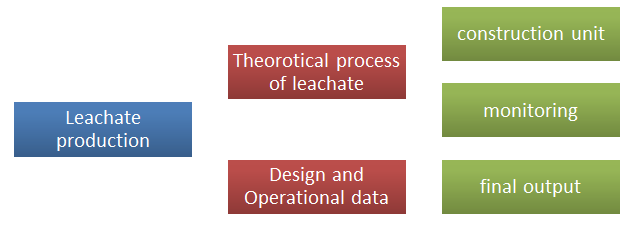
Figure 5: Implementation Process Of Recirculation Of Leachate
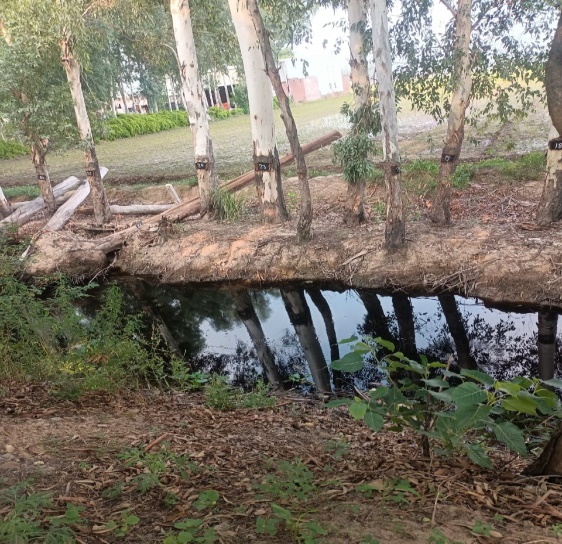
Figure 6: LEACHATE
II. LITRETURE REVIEW
M. Sinan Bilgili, Ahmet Demir, and Bestamin Ozkaya (2006 ) concluded that aerobic leachate recirculation is adequate for removing ammonia from the leachate. It improves anaerobic degradation better than aerobic degradation. The author suggested that combining aeration with leachate recirculation enhances degradation and leachate quality. [3]
S RENOU, JG GIVAUDAN, S. POULAIN,F. DIRASSOUYAN, and P. MOULIN (2007) raise the issue of the necessity of strict environmental regulations. The study gives detailed information about reverse osmosis for achieving effective recirculation. It also includes membrane processes, and it applies chemical and biological processes to break down contaminants [4].
ABDULHUSSAIN A. ABBAS, GUO JINGSONG & OTHERS 2009 at el, [5] This paper discusses various methods to treat leachates, which involve leachate channeling. It includes treating leachates at the domestic level or recycling domestic sewers. The paper discusses the biological processes by which aerobic and anaerobic matter break down. The author focuses on various methods like flotation, coagulation, ion exchange, ammonium stripping, etc. Technologies like membrane filtration are also included in this paper. The author uses conventional methods that are not sufficient. Modern advancements like reverse osmosis and nanofiltration are better options to treat leachate. [5]
Municipal Solid Waste Stabilization by Leachate Recirculation: A Case Study of Ambala City, Chadetrik Rout, Arabinda Sharma (2010), et al. The author determines how leachate recirculation affects the stability of municipal solid waste. In this paper, two small-scale landfill bioreactors are used, each containing around 10 kg of garbage treated for 16 weeks. The anaerobic conditions with and without leachate recirculation are determined by examining variations in leachate quality. Regular leachate quality assessments, including pH, electrical conductivity, calcium, magnesium, phosphate, and chemical oxygen demand (COD), are checked at regular intervals. The results showed that leachate recirculation is better with anaerobic decomposition as compared to other techniques. The bioreactor shows huge success rates when COD levels are reduced by 89.93% after maintaining a pH of 7.5. After 16 weeks, waste stabilization is seen in the recirculated bioreactor. For future improvements, we should concentrate on improving operating conditions for leachate recirculation rates as well as assessing the costs of successfully stabilizing solid waste. This study explores how leachate recirculation affects leachate properties in an anaerobic reactor. Weekly leachate samples were collected to assess pH and COD. The study found inconsistencies in many characteristics of leachate samples [6].
Impact of concentrated leachate recirculation on effectiveness of leachate treatment by reverse osmosisIzabela Anna Talalaj∗, Pawel Biedka 2015 at el The writer investigated the quality of leachate and its treatment with reverse osmosis. The reverse osmosis shows important amounts of sulfides (average of 828 μg/l), sulfates (1898 mg/l), chlorides (5608 mg/l), and electrical conductivity (8066 μS/cm). It also shows moderate chemical oxygen demand (1646 mg/l) and a low pH (6.7). The research shows that recycling concentrate in landfills produces a high amount of leachate, particularly in terms of inorganic components. Recycling increased breakdown along COD and BOD. The variations in leachate quality reduce the effectiveness of RO treatment. We found a result between iron content and COD clearance of about 0.75, indicating fouling and biofouling of iron. Leachate's electrical conductivity and chemical oxygen requirements increase recirculation. It results in a high amount of sulfates during pretreatment and sulfuric acid addition. After a year of recirculation, the landfill environment began to display methanogenic characteristics, including a higher pH and a lower BOD/COD ratio. The landfill's capacity has decreased for pollutants such as chloride and ammonia nitrogen. The analysis shows increased leachate electrical conductivity and low COD removal efficiency during RO operation due to the presence of iron salts. Iron salts promote membrane fouling by forming insoluble particles and facilitating biofouling through iron-reducing bacteria. The effectiveness of BOD removal is due to electrostatic interactions, which decrease with the help of repulsion between the negatively charged membrane surface and organic macromolecules [7].
Theoretical analysis of municipal solid waste treatment by leachate recirculation under anaerobic and aerobic conditions André G. van Turnhout a, Christian Brandstätter b, Robbert Kleerebezem c, Johann Fellner b,Timo J. Heimovaara 2017 at el author concluded that long-term emissions from municipal solid waste (MSW) dumps provide important issues for future generations. To address this issue, effective treatment procedures are required to decrease long-term emissions. The study intends to improve field-scale designs by offering a theoretical framework for identifying important processes that influence the effectiveness of leachate recirculation treatment. The author uses Bayesian statistical analysis to determine mechanisms during aerobic and anaerobic leachate recirculation in lysimeters. Aerobic methods reduce more biodegradable carbon, even though hydrolysis rates are lower in anaerobic methods. The work also implies that nitrogen removal by successive nitrification and denitrification is possible under aerobic circumstances, provided there is enough biodegradable carbon available. The established carbon and nitrogen elimination routes are significant for assessing treatment efficacy on a large field. Finally, the paper examines better options for successfully deploying these treatments on a broader scale to minimize long-term emissions from MSW landfills.
The author identified basic networks accurately, including carbon dioxide, pH, chloride, and ammonium emissions (under aerobic circumstances). The uniform sharing of oxygen and methanogens is critical to treatment competence. Aerobic conditions remove more biodegradable carbon (25% vs. 14%) and nitrogen (27% vs. 17%) than anaerobic conditions, while having a lower hydrolysis rate. Effective field-scale monitoring should emphasize measuring CO2, CH4, and NH4+ in anaerobic surroundings as well as CO2 and N2 under aerobic conditions, despite the difficulty of precisely measuring gas phases [8].
Treatment of landfill leachate by nanofiltration Thirumal. M1, Srinivasan. V1, Manibharathi. R1, Vinoth. K1, Thenmozhi. RA at el 2019 The author Concluded Nanofiltration can treat sanitary landfill leachate, but its effectiveness depends on the leachate's properties. The analysis using nanomembrane gives the following results:
1) The leachate treatment took around 12 minutes.
2) The nanofiltration system effectively utilizes an activated alumina bed.
3) The NF membrane removes COD, BOD, and polyvalent ions from leachate by reducing hardness and inorganic pollutants.
4) Treated water is used for toilet flushing and landscape irrigation. The procedure is environmentally safe, has no harmful chemicals, is long-lasting with minimal power requirements, and has low maintenance costs.
The study aimed to satisfy disposal standards for aquatic bodies using The concentration of BOD, COD, TDS, TSS, pH, hardness, The absence of nutrients during the methanogenic phase has slowed down biological therapeutic activities. Membrane technology is widely used nowadays. Nanomembrane filtration is used to separate incapable particles from landfill leachate. Nanofiltration, along with physiochemical techniques. It effectively eliminates up to 60–70% of COD and improves leachate treatment. The nanofiltration procedure effectively removes hardness, TSS, TDS, COD, and BOD from landfill leachate, reducing its disposal needs [9].
A Review of Landfill Leachate Treatment by Microalgae: Current Status and Future Directions Tabish Nawaz 1,2, Ashiqur Rahman 3,4 , Shanglei Pan 1,5, Kyleigh Dixon 5, Burgandy Petri 5 and Thinesh Selvaratnam 2020 at el Author use microalgae to cure landfill leachate. It also investigates how microalgae might recover nutrients from leachate while reducing their environmental impact. A future study needed to improve these strategies for better environmental results. Lid waste is currently disposed of in landfills. However, landfills emit hazardous substances called leachate over time, which can contaminate water. This leachate may be treated using a variety of approaches, including chemical and biological ones, with various degrees of effectiveness. There is a sustainable solutions that recover resources while minimizing environmental damage [10].
Effect of effluent recirculation on nutrients and organics removal performance of hybrid constructed wetlands: Landfill leachate treatment Tanveer Saeed*, Md Jihad Miah, Nehreen Majed, Md Kawser Alam, Tanbir Khan 2020 at el, Waste water recirculation altered the ratios of BOD/COD, COD/TN, BOD/TN, and NH4eN/TN in leachate, increasing pollutant removal efficiency in wetland systems. The quality effluent was produced when hybrid wetlands were operated at a 25% recirculation ratio. Nitrogen removal kinetics were determined by microbial activities such as ammonia absorption, ammonification, nitrification, and denitrification. Phosphorus removal was mostly accomplished by media-based adsorption. The differences in pollution removal between surface flow (SF) and horizontal flow (HF) wetlands were mostly due to differences in water depths. Because of the presence of unsaturated and saturated media, HF wetlands with shallow water depths facilitated both aerobic and anaerobic removal mechanisms. This study reveals crucial elements that contribute to better pollutant removal in wetland systems treating resistant landfill leachate [11].
Impact of Leachate Recirculation on Stabilization of Solid Wastes Leachate in Simulated Anaerobic Bioreactors I B Priyambada and W Oktiawan 2020 at el the organic contaminants in the leachate were evaluated using laboratory-scale anaerobic bioreactors. Artificial leachates were used. The reactors were running under two circumstances: high-concentration leachate and low-concentration leachate, with daily recirculation up to 90 days. BOD and COD levels were measured after 7 days. The results show that leachate recirculation greatly reduced BOD and COD levels when compared to reactors without recirculation. BOD removal in reactors with low and high concentrations of leachate was 83.98% and 92.15%, respectively, as compared to control reactors without recirculation. Overall, reactors with leachate recirculation were more successful in eliminating BOD and COD [12].
Reddy, K.R., Giri, R.K., Kulkarni, H.S. 2017. Modelling coupled hydromechanical behaviour of landfilled waste in bioreactor landfills: numerical formulation and validation. Journal of Hazardous, Toxic, and Radioactive Waste, 21 at el Bioreactor landfills with leachate recirculation are becoming the better way to manage municipal solid waste (MSW). In this study For finest performance, moisture must be distributed uniformly. This work presents a numerical two-phase flow model that predicts hydraulic behaviour and mechanical reaction in unsaturated MSW with leachate recirculation. Fast Lagrangian Analysis of Continua (FLAC) matches that leachate and landfill gas are two unmixable phases. The model's govern equations, numerical implementation, and validation in laboratory and field investigations indicates its capacity for successful bioreactor landfills with linked hydromechanical processes [13].
Effects of leachate recirculation quantity and aeration on leachate quality and municipal solid waste stabilization in semi-aerobic landfills Junwei Ma∗, Yijia Li, Yuqian Li 2021 at el the writer proposed that semi-aerobic bioreactor landfills (SABLs) represent extensive advancements in municipal solid waste (MSW) management, designed to accelerate biological processes and minimize landfill stabilization periods compared to traditional sanitary landfill methods. This study concluded the impact of SABLs using different leachate recirculation and pre aeration treatments across four landfill reactors, including one anaerobic control and three semi-aerobic setups varying in leachate recirculation (300 mL, 600 mL, and 600 mL aerated leachate per week).
Results verified that the reactor employing 600 mL of aerated leachate per week (reactor III) achieved the highest removal efficiencies, with COD and NH4-N removal rates reaching 97% and 88%, respectively. Organic substance degradation followed an exponential attenuation representation, with COD, NH4-N, and BOD5 removal rates increasing significantly from 0.019, 0.018, and 0.035 day−1 to 0.029, 0.025, and 0.053 day−1, respectively, with increased leachate recirculation and pre aeration.
Classification indices indicated that reactor III had the lowest I value of 312, suggesting that the combination of enhanced leachate recirculation and pre aeration positively influenced the MSW stabilization phase in SABLs. These findings ensure improved landfill management strategies using SABL technology to accelerate MSW stabilization, providing valuable experimental insights for advancing landfill operations. [14]
Evaluation of Leachate Recirculation as a Stabilisation Strategyfor Landfills in Developing CountriesJohn J. Sandoval-Cobo, Diana M. Caicedo-Concha, Luis F. Marmolejo-Rebellón, Patricia Torres-Lozada and Johann Fellner. As investigated, a leachate recirculation is used utilizing bioreactor studies with garbage from a dump yard in Colombia. Two 115 L bioreactors were used: Br2 with LR at 0.8 L/day and Br1 as both systems verified stability indicators for volatile solids (VS <25% DM) and biochemical methane potential (BMP <10 mL CH4/g DM). Br2's leachate reaches stabilizing levels for BOD5 (<100 mg/L) and the BOD/COD ratio (<0.1), but not for COD (<200 mg/L). LR in Br2 produced 19% more oxidizable organic matter than Br1, despite the lower risk of waste contamination. Methane production was greater in Br2 by about 34.5%, implying the fastest waste stabilization. The study shows that LR can increase landfill stabilization and decrease greenhouse gas emissions. investigated, a leachate recirculation approach is used utilizing bioreactor studies with garbage from a dump yard in Colombia. Two 115 L bioreactors were used: Br2 with LR at 0.8 L/day and Br1 as both systems verified stability indicators for volatile solids (VS <25% DM) and biochemical methane potential (BMP <10 mL CH4/g DM). Br2's leachate reaches stabilizing levels for BOD5 (<100 mg/L) and the BOD/COD ratio (<0.1), but not for COD (<200 mg/L). LR in Br2 produced 19% more oxidizable organic matter than Br1, despite the lower risk of waste contamination. Methane production was greater in Br2 by about 34.5%, implying the fastest waste stabilization. The study shows that LR can increase landfill stabilization and decrease greenhouse gas emissions [15].
Leachates Recirculation Impact on the Stabilization of the Solid Wastes – A Review Omar Amer Hussein1*, Jathwa Abd-Alkareem Ibrahim1 2023 at el, [16] Leachate recirculation improves waste decomposition by allowing permeation into the solid waste mass. When this is implemented in high kitchen or food waste content, major issues such as gassing loss and rapid decomposition compaction must be known. Recirculating acts as a bioreactor, having environmental and economic benefits. However, gravity can cause recycled leachates to flow directly to the collection system, potentially wasting them. Recirculation increases contact between methanogenic bacteria and dissolved organic matter, buffering pH during hydrolysis. Landfill conditions such as construction, temperature, humidity, weather, pH, and biodegradable parameters influence leachate generation. Bioreactor landfills improve solid waste stabilization efficiently through controlled leachate and gas recirculation. Leachate recycling also accelerates biodegradation, lowers pollutant concentrations, and increases gas production in landfills. This process enhances acidification, improves gassing efficiency, and results in less waste in landfills. Moreover, it accelerates the early colonization of bacteria, boosting waste decomposition. Landfill leachate: Sources, nature, organic composition, and treatment [17]. Studies on operating parameters Perumal Asaithambi 2023 et al The author finds that the environmental industry uses electro coagulation to treat industrial wastewater and effluent for recycling and drinking purposes. This study concluded an iron (Fe) recirculation EC technology for wastewater. Key Pararmeter like COD, pH, current, electrode combinations, flow rate, electrolyte, concentration, and treatment duration were examined for the percentage of COD reduction efficiency and energy consumption. The results showed 100% colour removal and 99.90% COD removal. Optimized parameters led to increased percentage COD reduction efficiency, and the treated wastewater can be fully recovered as clean water. This EC process shows great results for removing contaminants from wastewater and industrial effluent [18]. A Critical Review on the Microbial Ecology of Landfill Leachate Treatment Systems Nikolaos Remmas 2023 et al, Sanitary landfill leachate is rich in heavy metals, which is challenging for sustainable management. studies examine the microbial composition in leachate treatment. This review brings to light the crucial role of microbial ecology in purifying and detoxifying landfill leachate in activated sludge and anaerobic systems.
It also discusses how microbial agents perform biological processes like nitrification, denitrification, and anaerobic digestion and their impact on nutrient removal efficiency in the system [19].
Advantage of leachate recirculation on municipal solid waste biodegradation: experimental and field results Mostafa A. Warith 1970 at el , Writer proposes Techniques to improve degradation in landfills include leachate recirculation, adding nutrients, shredding moisture, and other issues. These methods create a better environment for microbial activity. This paper presents a detailed report on a 65-week leachate recirculation experiment in three waste cells. Weekly effluent samples showed that adding materials to leachate accelerates the biological degradation of solid waste. [20]
Effect of Recirculation Method on Quality of Landfill Leachate and Effectiveness of Biogas Production U. Filipkowska 2007 at el, This study evaluates the effect of recirculated water. Different research is done on landfill waste. It has four lysimeters in which wastes are mixed with water (2.15 and 4.30 mm/day) in two lysimeters and the other two with sewage (2.15 and 4.30 mm/day). The research finds a relationship between the amount of pollutants that develop in the produced leachate and the volume and composition of biogas. [18]. From The literature reviewed various methods and techniques for improving leachate treatment and municipal solid waste (MSW) are concluded. Key findings include :
- Aerobic Leachate Recirculation: It is Effective for removing ammonia and improving anaerobic declination. Adjoining aeration with leachate recirculation improves leachate quality .
- Reverse Osmosis and Membrane Processes: helpful for treating leachate by breaking down contaminants and stick to strict environmental regulations. Modern methods such as reverse osmosis and nanofiltration overcome conventional methods .
- Anaerobic breakdown with Leachate Recirculation: Shows a notable reduction in COD levels, encouraging waste stabilization.
- Intensive Leachate Recirculation: Yields high amounts of leachate with inorganic components, and reverse osmosis is less effective due to variations in leachate quality.
- Theoretical Analysis of MSW Treatment: Aerobic conditions eliminate more recyclable carbon and nitrogen, highlighting the need for productive monitoring of CO2, CH4, and NH4+ .
- Nanofiltration: Useful for treating sanitary landfill leachate by removing COD, BOD, making the water suitable for reuse .
- Microalgae in Leachate Treatment: Eco friendly method that regain nutrients and decreases environmental damage, but requires further research for Upgradation .
- Hybrid Constructed Wetlands Suitable for pollutant removal, with different productiveness based on water depth and microbial activities .
- Impact of Leachate Recirculation on Solid Waste Stabilization: Shows Essential BOD and COD reduction, promoting waste stabilization and methane production.
Conclusion
MBBR: MBBR Is Suitable for situations requiring high treatment efficiency, stable operation, and compact design in spite of higher costs and maintenance needs. Where as Leachate Recirculation Is Ideal for cost-effective, low-maintenance situations where in-situ biodegradation is Suitable and site conditions are well-managed to prevent environmental risks. Selection Of these methods depends on the specific requirements ,Expenditure, and site conditions of the leachate treatment project. Further studies should be done to find optimum and better results between recirculation and MBBR Techniques.
References
[1] CHAPTER I7 GENERAL. (n.d.). cpheeo.gov.in (n.d.). https://cpheeo.gov.in/upload/uploadfiles/files/chap17(1).pdf [2] https://www.hspcb.org.in/page/district-environment-plan [3] Bilgili, M. S., Demir, A., & Özkaya, B. (2007). Influence of leachate recirculation on aerobic and anaerobic decomposition of solid wastes. Journal of Hazardous Materials, 143(1–2), 177–183. https://doi.org/10.1016/j.jhazmat.2006.09.012 [4] Renou, S., Givaudan, J. G., Poulain, S., Dirassouyan, F., & Moulin, P. (2008). Landfill leachate treatment: Review and opportunity. In Journal of Hazardous Materials (Vol. 150, Issue 3, pp. 468–493). https://doi.org/10.1016/j.jhazmat.2007.09.077 [5] Abbas, A. A., Jingsong, G., Zhi Ping, L., Ying Ya, P., & Al-Rekabi, W. S. (2009). Review on LandWll Leachate Treatments. In Journal of Applied Sciences Research (Vol. 5, Issue 5). [6] Rout, C., & Sharma, A. (2010). Municipal Solid Waste Stabilisation by Leachate Recirculation: A case study of Ambala City. In INTERNATIONAL JOURNAL OF ENVIRONMENTAL SCIENCES (Vol. 1, Issue 4). www.IndianJournals.com [7] Talalaj, I. A., & Biedka, P. (2015). Impact of concentrated leachate recirculation on effectiveness of leachate treatment by reverse osmosis. Ecological Engineering, 85, 185–192. https://doi.org/10.1016/j.ecoleng.2015.10.002 [8] van Turnhout, A. G., Brandstätter, C., Kleerebezem, R., Fellner, J., & Heimovaara, T. J. (2018). Theoretical analysis of municipal solid waste treatment by leachate recirculation under anaerobic and aerobic conditions. Waste Management, 71, 246–254. https://doi.org/10.1016/j.wasman.2017.09.034 [9] A, T. R. (2008). TREATMENT OF LANDFILL LEACHATE BY NANOFILTRATION. International Research Journal of Engineering and Technology, 3088. www.irjet.net [10] Nawaz, T., Rahman, A., Pan, S., Dixon, K., Petri, B., & Selvaratnam, T. (2020). A review of landfill leachate treatment by microalgae: Current status and future directions. In Processes (Vol. 8, Issue 4). MDPI AG. https://doi.org/10.3390/PR8040384 [11] Saeed, T., Miah, M. J., Majed, N., Alam, M. K., & Khan, T. (2021). Effect of effluent recirculation on nutrients and organics removal performance of hybrid constructed wetlands: Landfill leachate treatment. Journal of Cleaner Production, 282. https://doi.org/10.1016/j.jclepro.2020.125427 [12] Priyambada, I. B., & Oktiawan, W. (2020, March). Impact of Leachate Recirculation on Stabilization of Solid Wastes Leachate in Simulated Anaerobic Bioreactors. In IOP Conference Series: Earth and Environmental Science (Vol. 448, No. 1, p. 012127). IOP Publishing. https://doi.org/10.1088/1755-1315/448/1/012127 [13] Reddy, K. R., Giri, R. K., & Kulkarni, H. S. (2017). Modeling coupled hydromechanical behavior of landfilled waste in bioreactor landfills: numerical formulation and validation. Journal of Hazardous, Toxic, and Radioactive Waste, 21(1), D4015004. https://doi.org/10.1061/(ASCE)HZ.2153-5515.0000289 [14] Ma, J., Li, Y., & Li, Y. (2021). Effects of leachate recirculation quantity and aeration on leachate quality and municipal solid waste stabilization in semi-aerobic landfills. Environmental Technology & Innovation, 21, 101353. https://doi.org/10.1016/j.eti.2021.101353 [15] Sandoval-Cobo, J. J., Caicedo-Concha, D. M., Marmolejo-Rebellón, L. F., Torres-Lozada, P., & Fellner, J. (2022). Evaluation of Leachate Recirculation as a Stabilisation Strategy for Landfills in Developing Countries. Energies, 15(17). https://doi.org/10.3390/en15176494 [16] Hussein, O. A., & Ibrahim, J. A. A. (2023). Leachates Recirculation Impact on the Stabilization of the Solid Wastes–A Review. Journal of Ecological Engineering, 24(4). https://doi.org/10.12911/22998993/159635 [17] Asaithambi, P., Yesuf, M. B., Govindarajan, R., Selvakumar, P., Niju, S., Pandiyarajan, T., ... & Alemayehu, E. (2023). Industrial wastewater treatment using batch recirculation electrocoagulation (BRE) process: Studies on operating parameters. Sustainable Chemistry for the Environment, 2, 100014. https://doi.org/10.1016/j.scenv.2023.100014 [18] Remmas, N., Manfe, N., Zerva, I., Melidis, P., Raga, R., & Ntougias, S. (2023). A critical review on the microbial ecology of landfill leachate treatment systems. Sustainability, 15(2), 949. https://doi.org/10.3390/su15020949 [19] Warith, M. A. (1970). Advantage of leachate recirculation on municipal solid waste biodegradation: experimental and field results. WIT Transactions on Ecology and the Environment, 33. https://doi.org/10.2495/WP990201 [20] Filipkowska, U. (2008). Effect of recirculation method on quality of landfill leachate and effectiveness of biogas production. Polish Journal of Environmental [21] Studies, 17(2), 199.
Copyright
Copyright © 2025 Angad Preet, Aadil Manzoor. This is an open access article distributed under the Creative Commons Attribution License, which permits unrestricted use, distribution, and reproduction in any medium, provided the original work is properly cited.

Download Paper
Paper Id : IJRASET66352
Publish Date : 2025-01-07
ISSN : 2321-9653
Publisher Name : IJRASET
DOI Link : Click Here
 Submit Paper Online
Submit Paper Online

